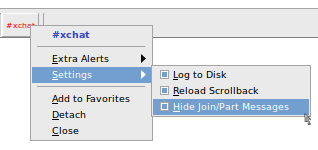Archive for January, 2012
SOLVED: Resetting your Apple ID with cut-and-paste enabled
 If you’re like me, you have lots of passwords. More than you can keep in your head. So, you use an app like KeePassX to hold and secure them all.
If you’re like me, you have lots of passwords. More than you can keep in your head. So, you use an app like KeePassX to hold and secure them all.
I keep all of my passwords securely stored in Dropbox so they are accessible via my computers and my BlackBerry device (via the FileScout Dropbox plugin), and it works well. I also sync that data into SpiderOak as an additional, very secure backup of my backup.
My passwords tend to be very complex and lengthy, on purpose. Here are some example passwords that are similar to those I use every day (no, these are not my actual passwords, but these are real, valid passwords I would use, generated by KeePassX’s generator):
1.) {>"L-).df_7jGWGeK9fy,agF
2.) UY}\.YX_zG#mP2KSo%nHM-t!
3.) axA-O=Af6nAMW_Og%H2WkC/
4.) -A&Xh0ag^6(uMNlt+WyF_K"S
5.) =C\;NPk4Cz5Hyte-a,_nUhpx
6.) Dn-99kMeNF]jr_#7"<3]#dBY
These are 158-bit (24-character) passwords that KeePassX generated for me for this article. It may look like random keyboard hammering noise, but those are real passwords. And there’s no way I’m going to remember those.
My Apple ID contains a similarly complex password, and I recently had to reset it because Apple “forgot” my password, but Apple’s site refuses to let me paste those complex passwords into their web form entry dialog because of the heavy-handed JavaScript on the page.
What this does, is encourage people to pick “simpler”, less secure passwords. Shame on you Apple, shame on you!
Here’s how I figured out how to fix it:
Read the rest of this entry »
SOLVED: Permanently setting “Hide Join/Part Messages” off in XChat

I’ve been using XChat since early year 2000 (loooong time BitchX user before that), and have found it somewhat annoying to have to manually and interactively disable the “Join/Part” messages in each IRC channel I am lurking on.
To do that, you normally have to right-click each channel’s tab, go to Settings → Hide Join/Part Messages” and check the little box. For each channel.

If your client is reset or reconnects to the IRC server (due to a server HUP or upstream network rest), you have to do it all over again. It’s a pain.
Since I leave XChat running for months on end with dozens of joined channels, it becomes a lot of visual clutter for very busy, high-traffic channels.
Here’s how to fix that, so you don’t have to set it again for any of the channels you’re joined to. Simply type these two commands into your XChat IRC window:
/set irc_conf_mode on /gui apply
That’s it! Now all of your channels’ Join/Part messages will be muted and you won’t have to manually check each box again for any new channels you join.
If you want to unset this so they are visible again, just reverse the actions:
/set irc_conf_mode off /gui apply
P.S.: For Windows users, the best XChat IRC client is the one provided by SilverX. You can download that on their website.
HOWTO: Convert a VirtualBox image to a VMware Disk Image
 While playing with the recent FreeDOS 1.1 release (only 17 years in the making), I found a need to convert a VirtualBox appliance image to a VMware disk image, but the steps weren’t clear or straightforward.
While playing with the recent FreeDOS 1.1 release (only 17 years in the making), I found a need to convert a VirtualBox appliance image to a VMware disk image, but the steps weren’t clear or straightforward.
Here’s what I did, in a nutshell:
- First, install VirtualBox. You can grab the install from the main VirtualBox downloads page. I run Linux, so I grabbed those. If you run Windows or Mac, you’ll want to pick one of those installers specific to your platform
- Once installed, you’ll find that VirtualBox comes with a tool called “vboxmanage”. We’re going to use this to convert the image from a VirtualBox .vdi image to a “raw” image file.
$ vboxmanage internalcommands converttoraw FreeDOS-1.1+networking.vdi FreeDOS-1.1+networking.raw
- Next, we want to take that image and convert it to a proper VMware disk image. To do that, we need to install QEMU and use one of the tools provided with that package to do the conversion for us. Since I run Debian, this was as simple as an apt-get to fetch what I needed.
$ sudo apt-get install qemu-kvm Unpacking replacement qemu-kvm ... Processing triggers for man-db ... Processing triggers for ureadahead ... ureadahead will be reprofiled on next reboot Setting up qemu-kvm (0.12.3+noroms) ... start: Job is already running: qemu-kvm
- Then we want to convert the “raw” image we created with vboxmanage to an image that VMware knows how to use:
$ qemu-img convert -O vmdk FreeDOS-1.1+networking.raw FreeDOS-1.1+networking.vmdk
That’s basically it. Once that was converted, I created a basic VMware virtual machine (.vmx file) to refer to that .vmdk file, and then did my post-conversion tweaks and hacks to minimize the size of the VM, disable some unnecessary BIOS options inside the VM, and archived it away.
Update: If you want to do this all in one step, here’s a quicker way:
$ vboxmanage clonehd FreeDOS-1.1+networking.vdi FreeDOS-1.1+networking.vmdk –format VMDK \ –variant standard –type normal –remember
Simple, right?
